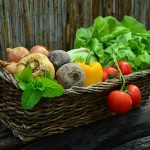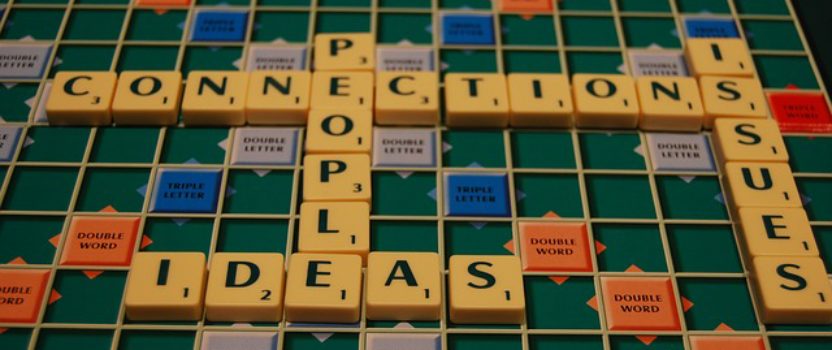Post 25 – Green Leaders Tell Us the Best Ways Individuals Can Fight Climate Change
I was very excited to see the title of today’s post pop up as a headline on my news feed a couple of weeks ago. I clicked on it straight away to see how it compared with my emerging personal  position on this question. I didn’t even bother to look at the source of the article; all I noticed was that it was European (it turns out it was from a conservative leaning UK newspaper not particularly known for its depth of reporting). I was quite stunned when I read the recommendations; they were amazingly superficial. Despite, or maybe because of, the superficiality of the recommendations, the article attracted close to 200 comments but many were disappointingly off topic, as well as being about what ‘others’ should be doing rather than saying ‘this is what I am doing; this is what I believe’. As a result of my disappointment, I thought I would summarize what I think are the most effective personal actions that can be taken by individuals to mitigate climate change and talk about one in some depth. Most of these actions save money or, at worst, cost very little so affordability shouldn’t be a barrier for anyone who wants to make some changes.
position on this question. I didn’t even bother to look at the source of the article; all I noticed was that it was European (it turns out it was from a conservative leaning UK newspaper not particularly known for its depth of reporting). I was quite stunned when I read the recommendations; they were amazingly superficial. Despite, or maybe because of, the superficiality of the recommendations, the article attracted close to 200 comments but many were disappointingly off topic, as well as being about what ‘others’ should be doing rather than saying ‘this is what I am doing; this is what I believe’. As a result of my disappointment, I thought I would summarize what I think are the most effective personal actions that can be taken by individuals to mitigate climate change and talk about one in some depth. Most of these actions save money or, at worst, cost very little so affordability shouldn’t be a barrier for anyone who wants to make some changes.
Having stuck my neck out, by being prepared to suggest what individuals can do to fight climate change, I hear metaphorical voices saying it’s a waste of time; individual actions are meaningless; mitigating climate change is about governments taking action; keeping the fossil fuels in the ground and so on. I both agree and disagree with those voices. Governments need to act, fossil fuels need to stay in the ground, but I don’t think we should underestimate the influence of a groundswell of changed personal behaviours, at least in a democracy. I also think that if we are going to have legitimacy in our calls upon government, then we need to live our beliefs.
So, what is my list of actions for individuals and households? First, I recommend reduced consumption of pretty much everything; buy less ‘stuff’ and you can definitely save money as well as generate less waste. Second I recommend a predominantly vegetarian or even vegan diet; you will save money adding this option to the previous one. Third I recommend supporting the availability of contraception throughout the world; at seven billion people and counting, fewer people would take the pressure off everything. Again, fewer children, less cost. Fifth, I recommend you buy ‘green’ electricity but, be careful, buying from a carbon neutral or green supplier is not the same as buying green electricity which must come from a renewable source. Some electricity suppliers that call themselves a green electricity company have a business that is carbon neutral but their product is not necessarily so. In most of Australia, ‘green’ electricity costs about $0.05/kWh more but for those who can’t afford this additional cost, look at other forms of renewable electricity that are not called ‘green’ electricity but never-the-less come from a renewable source such as hydro-electricity. My sixth recommendation is that you predominantly buy locally grown, unprocessed , seasonal food which also saves money. Recommendation seven is to join the divestment movement by choosing a bank and pension fund that doesn’t invest in fossil fuels. Although this doesn’t take the carbon out of the atmosphere, it is starting to have a powerful influence on the supply of money to fossil fuel organisations. My eighth recommendation is to reduce your travel whenever possible and use lower carbon options like walking, cycling, shared cars, buses and trains. Finally, options nine and ten involve telling your elected representatives, and those aspiring to represent you, that you are concerned about climate change (I have yet to do this) as well as signing petitions and joining events that express concern or support climate change initiatives.
Of this list of recommendations, I believe that the most meaningful thing I have chosen to do is become vegetarian with leanings towards vegan-ism. Just for the record, the difference is that  vegetarians don’t eat meat and vegans don’t eat any animal products so, for example, someone who is vegan wouldn’t eat meat, cheese, eggs or honey. People choose to be vegetarian or vegan for a variety of reasons. Sometimes it’s about health (red meat and processed meats have been getting a bad rap recently); sometimes it’s about animal ethics; sometimes its about climate change; and, sometimes it’s about a combination of these concerns. As far as climate change is concerned, there are a number of issues related to eating animal products. Most consumed farmed meat and wild fish are of concern. Many farmed meat animals such as cattle, sheep and goats are ruminants which means that they produce methane as a result of their digestive processes. It was estimated in 2007 that just over 13% of Australia’s total national emissions were from ruminant animals alone. Additionally, meat animals require either land to graze on or high protein feed via a feedlot, so they can grow. A lot of land has been cleared (and continues to be cleared) for animal grazing or to grow the food that feeds the animals (such as soy beans in the US). This usually means that trees are cut down and so the carbon sink that is represented by trees is made smaller. Meat animals also consume a lot of water which is also becoming an increasingly scarce resource. For
vegetarians don’t eat meat and vegans don’t eat any animal products so, for example, someone who is vegan wouldn’t eat meat, cheese, eggs or honey. People choose to be vegetarian or vegan for a variety of reasons. Sometimes it’s about health (red meat and processed meats have been getting a bad rap recently); sometimes it’s about animal ethics; sometimes its about climate change; and, sometimes it’s about a combination of these concerns. As far as climate change is concerned, there are a number of issues related to eating animal products. Most consumed farmed meat and wild fish are of concern. Many farmed meat animals such as cattle, sheep and goats are ruminants which means that they produce methane as a result of their digestive processes. It was estimated in 2007 that just over 13% of Australia’s total national emissions were from ruminant animals alone. Additionally, meat animals require either land to graze on or high protein feed via a feedlot, so they can grow. A lot of land has been cleared (and continues to be cleared) for animal grazing or to grow the food that feeds the animals (such as soy beans in the US). This usually means that trees are cut down and so the carbon sink that is represented by trees is made smaller. Meat animals also consume a lot of water which is also becoming an increasingly scarce resource. For 
I must add at this point that I have not found it hard to ‘go vego’. It’s actually been quite a bit of fun and really interesting. There have been new recipes and ingredients to try out; things to learn about how different food works in our bodies; and, a better feeling about animals. I’m not rigid about my vegetarianism and so, at least in my mind, allow myself five days out of 100 when I can eat meat or fish. I’ve found that its very rare that I have exercised this option. Occasionally, we have been out and friends have only served meat for a meal, so I eat what they are kind enough to give me. On other occasions, we have deliberately chosen a fine dining experience and very innovative, prime (usually organic) meat has been served and I have enjoyed eating it (the servings are usually very small as is the case in such restaurants). I think over the last year, I would have eaten meat or fish, mostly fish, on about 10 occasions which makes me 99% vegetarian.
Really … 
My main bench mark for what is ‘normal’ in relation to food in Australia are the Women’s Weekly cookbooks. I have many of them that have been published over the years and the recipes almost always work well and are well received by those eating the resulting food. Imagine how pleased I was when I swung through one of the chain department stores recently to see the latest WW cook book on display and wait for it, the title was ‘Almost Vegetarian’. I bought it for a modest $19.99 and have tried at least four of the recipes and they are delicious, as always, and work well and have been well received by non-vego visitors. The book starts with options for recipes that have small amounts of meat or fish in them, then moves on to meat free Mondays, then vegetarian recipes than vegan recipes. All in all, very nice! I’ll be back next week. Bye for now, Jane

